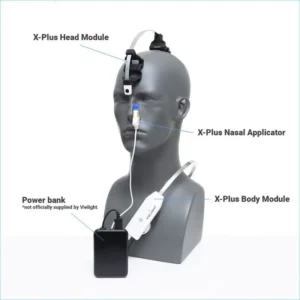Below I have included abstracts of two recent studies that report PEMF (Pulsed Electromagnet Field) therapy offers relief for both movement disorders and tremors.
I have personally used the BEMER (the gold standard of PEMF therapies and the only FDA approved device) for several years now with marvelous results. With aging, tiny passage ways through which blood circulates – known as capillaries – narrow and eventually shut down as circulation conduits. Seventy-five percent of the circulation throughout the body is delivered by the capillaries, not arteries or veins. The BEMER opens up circulation passageways throughout the body.
What are the benefits of this? First, essential nutrients are delivered to the cells. Second, waste that accumulates in the cells is removed. In short, the body begins to function more effectively and efficiently.
For more information about the BEMER visit:
https://robert-rodgers.bemergroup.com/en_US/human-line/home
Below are listed abstracts of the two recent PEMF studies. This first reports on the benefits of PEMF for movement disorders. The second reports on benefits for tremors.
Movement Disorders
PLoS One. 2021 Apr 28;16(4):e0248800. Long-term treatment with transcranial pulsed electromagnetic fields improves movement speed and elevates cerebrospinal erythropoietin in Parkinson’s disease. Bente Rona Jensen, Anne Sofie Bøgh Malling, Sissel Ida Schmidt, Morten Meyer, Bo Mohr Morberg, Lene Wermuth
Abstract
Background: Parkinson’s disease is characterized by motor dysfunctions including bradykinesia. In a recent study, eight weeks of daily transcranial stimulation with bipolar pulsed electromagnetic fields improved functional rate of force development and decreased inter-hand tremor coherence in patients with mild Parkinson’s disease.
Objective: To investigate the effect of long-term treatment with transcranial bipolar pulsed electromagnetic fields on motor performance in terms of movement speed and on neurotrophic and angiogenic factors.
Methods: Patients diagnosed with idiopathic Parkinson’s disease had either daily 30-min treatment with bipolar (±50 V) transcranial pulsed electromagnetic stimulation (squared pulses, 3ms duration) for three eight-week periods separated by one-week pauses (T-PEMF group) (n = 16) or were included in a PD-control group (n = 8). Movement speed was assessed in a six-cycle sit-to-stand task performed on a force plate. Cerebrospinal fluid and venous blood were collected and analyzed for erythropoietin and vascular endothelial growth factor.
Results: Major significant improvement of movement speed compared to the natural development of the disease was found (p = 0.001). Thus, task completion time decreased gradually during the treatment period from 10.10s to 8.23s (p<0.001). The untreated PD-control group did not change (p = 0.458). The treated group did not differ statistically from that of a healthy age matched reference group at completion of treatment. Erythropoietin concentration in the cerebrospinal fluid also increased significantly in the treated group (p = 0.012).
Conclusion: Long-term treatment with transcranial bipolar pulsed electromagnetic fields increased movement speed markedly and elevated erythropoietin levels. We hypothesize that treatment with transcranial bipolar pulsed electromagnetic fields improved functional performance by increasing dopamine levels in the brain, possibly through erythropoietin induced neural repair and/or protection of dopaminergic neurons.
Tremors
Neurol Sci. 2023 Feb;44(2):461-470.Physical therapy interventions for the management of hand tremors in patients with Parkinson’s disease: a systematic review. Mostafa Shahien, Abdelrahman Elaraby, Mohamed Gamal, Eslam Abdelazim, Basel Abdelazeem, Hazem S Ghaith, Ahmed Negida
Abstract
Background: Several physical therapy modalities have been used to improve hand tremors in patients with Parkinson’s disease (PD). However, little is known about the efficacy of these techniques. Therefore, we conducted this study to synthesize evidence from published studies on the efficacy of physical therapy techniques for hand tremors in PD patients.
Methods: We followed the PRISMA statement and Cochrane handbook guidelines when conducting this study. We conducted an electronic literature search of PubMed, Cochrane Central Register of Clinical Trials, Web of Science, Ovid, and Embase, and then we selected clinical trials assessing the efficacy of any physical therapy intervention for hand tremors in patients with PD. Study outcomes were extracted, and evidence was synthesized narratively.
Results: A total of six modalities described in six studies were included in this systematic review. Out of the six interventions, the tremor’s glove and electrical stimulation showed significant improvements in root mean square angular velocity (59% and 43.8%, respectively) and UPDRS tremor score (P < 0.05 for both). Also, eccentric exercises were associated with significant reductions in the mean resting tremor amplitude (P < 0.05). These data were dependent on single studies; therefore, a meta-analysis was not feasible.
Conclusion: Several physical therapy interventions, such as electrical stimulation, exercises, transcranial low voltage pulsed electromagnetic fields, weights, and virtual reality showed promising results in reducing hand tremors.
J Neuroeng Rehabil . 2019 Jan 31;16(1):19. The effect of 8 weeks of treatment with transcranial pulsed electromagnetic fields on hand tremor and inter-hand coherence in persons with Parkinson’s disease. Anne Sofie Bøgh Malling, Bo Mohr Morberg, Lene Wermuth, Ole Gredal, Per Bech, Bente Rona Jensen
Abstract
Background: Parkinson’s disease (PD) tremor comprises asymmetric rest and postural tremor with unilateral onset. Tremor intensity can be amplified by stress and reduced by attention, and the medical treatment is complex. Mirror movements and unintentional synchronization of bimanual movements, possibly caused by insufficient inhibition of inter-hemispheric crosstalk, have been reported in PD, indicating a lag of lateralization. Potential neuroprotective effects of pulsed electromagnetic fields (PEMF) have been reported in-vitro and in rodents, as have influences of PEMF on human tremor. The aim was to investigate the effect of 8 weeks daily transcranial PEMF treatment (T-PEMF) of persons with PD on rest and postural hand tremor characteristics and on inter-hand coherence.
Methods: Hand accelerations of 50 PD participants with uni- or bilateral tremor participating in a clinical trial were analysed. A rest and postural tremor task performed during serial subtraction was assessed before and after 8 weeks of T-PEMF (30 min/day, 50 Hz, ±50 V, 3 ms squared pulses) or placebo treatment (sham stimulation 30 min/day). Forty matched healthy persons (no treatment) were included as reference. Intensity and inter-hand coherence related measures were extracted.
Results: The T-PEMF treatment decreased the inter-hand coherence in the PD group with unilateral postural tremor. The PD group with unilateral postural tremor was less clinically affected by the disease than the PD group with bilateral postural tremor. However, no differences between T-PEMF and placebo treatment on either intensity related or coherence related measures were found when all persons with PD were included in the analyses. The peak power decreased and the tremor intensity tended to decrease in both treatment groups.
Conclusions: Eight weeks of T-PEMF treatment decreased inter-hand coherence in the PD group with unilateral postural tremor, while no effects of T-PEMF treatment were found for the entire PD group. The unilateral postural tremor group was less clinically affected than the bilateral postural tremor group, suggesting that early treatment initiation may be beneficial. In theory, a reduced inter-hand coherence could result from a neuronal treatment response increasing inter-hemispheric inhibition


 hydrophilic, making it easily absorbed into the body. It provides accelerated, increased absorption and potency and acts as an anti-bacterial and prebiotic. CBD has been known to support healthy blood sugar levels, promote healthy energy levels, relieve anxiety, aid in digestion, support optimal immune function and the regeneration of healthy cells, and promote a sense of serenity and overall well-being.”
hydrophilic, making it easily absorbed into the body. It provides accelerated, increased absorption and potency and acts as an anti-bacterial and prebiotic. CBD has been known to support healthy blood sugar levels, promote healthy energy levels, relieve anxiety, aid in digestion, support optimal immune function and the regeneration of healthy cells, and promote a sense of serenity and overall well-being.”